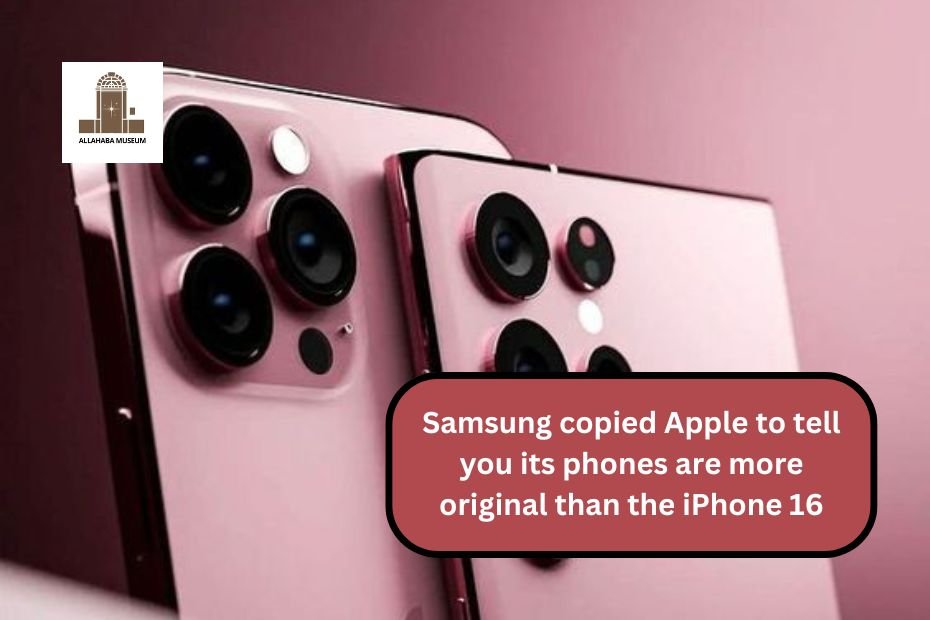Samsung’s recent marketing strategies and product designs have reignited the ongoing debate about originality and imitation in the tech industry, particularly in relation to Apple. The latest developments highlight how Samsung has both borrowed from and mocked Apple, especially with the launch of the iPhone 16. This article explores Samsung’s tactics, the implications of their advertising campaigns, and the broader context of competition between these two tech giants.
Samsung’s Copycat Strategy
For over a decade, Samsung has been known for its ability to adapt and borrow features from Apple. This practice has often been seen as a double-edged sword; while it allows Samsung to remain competitive, it raises questions about its innovation capabilities. Recent products like the Galaxy Watch Ultra and Galaxy Buds 3 have drawn clear inspiration from Apple’s designs, featuring similar aesthetics and functionalities. For instance, the Galaxy Watch Ultra mimics the look and feel of the Apple Watch Ultra, complete with an orange button and rugged design elements.Samsung’s approach is not merely about replicating features but also about positioning itself in a way that challenges Apple’s dominance. The company has historically engaged in a game of catch-up, often launching products that echo Apple’s offerings while attempting to add unique twists to maintain a semblance of originality. This strategy was evident during Samsung’s recent Unpacked event, where the company unveiled several products that closely resemble Apple’s lineup but with slight modifications.
The Anti-iPhone 16 Campaign
In a bold move, Samsung launched an advertising campaign targeting the iPhone 16 that employs elements reminiscent of Apple’s iconic “Think Different” campaign. This campaign features a partially unfolded Galaxy Z Flip 6 amidst a backdrop of identical white iPhones, highlighting Samsung’s claim of being more original than Apple. The ad cleverly uses similar typography and messaging to drive home its point, effectively mocking Apple for its repetitive design choices over the years.Despite the humor in this campaign, it also underscores a significant irony: Samsung itself has reused designs across its product lines. The Galaxy Z Flip 6 retains much of its predecessor’s design while boasting improved specifications—a tactic that mirrors Apple’s approach with its iPhone models. This duality raises questions about whether Samsung can genuinely claim superiority in originality when it engages in similar practices.
Implications for Competition
The rivalry between Apple and Samsung is emblematic of a larger trend within the tech industry, where companies continuously borrow ideas from one another. This phenomenon can be beneficial as it fosters competition that drives innovation. However, it also leads to a blurred line between inspiration and imitation. Critics argue that while Samsung’s copying may help improve its products, it also reflects a lack of true innovation.This ongoing cycle of imitation can be seen as both a blessing and a curse for consumers. On one hand, it ensures that they have access to advanced features at competitive prices; on the other hand, it raises concerns about whether companies are genuinely pushing technological boundaries or merely rehashing existing ideas.
The Broader Context of Innovation
The tech industry thrives on competition, which often leads to rapid advancements in technology. However, both Apple and Samsung have faced criticism for stagnating in terms of groundbreaking innovations in recent years. The iPhone 15 Pro was criticized for not significantly deviating from its predecessor, leading to questions about Apple’s commitment to innovation. Similarly, while Samsung has made strides with foldable technology, it still relies heavily on established designs that echo previous models.This stagnation highlights an essential truth: true innovation requires risk-taking and creativity beyond mere imitation. Companies must strive to differentiate themselves not only through marketing tactics but also through genuine advancements in technology that resonate with consumers’ evolving needs.
Conclusion
Samsung’s recent actions—both in product design and marketing—reflect an ongoing struggle for originality within the competitive landscape shared with Apple. While mocking Apple for its design choices may resonate with some consumers, it simultaneously exposes Samsung’s own reliance on similar strategies. As both companies navigate this complex relationship, they must focus on fostering genuine innovation rather than merely engaging in cycles of imitation. Ultimately, consumers benefit from competition that encourages technological advancements; however, they also deserve products that reflect true originality and creativity. As we move forward into an era where smartphones continue to evolve rapidly, both Apple and Samsung will need to reassess their approaches to ensure they remain relevant in an ever-changing market landscape.
